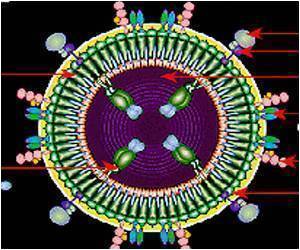
‘Chronic pain costs the Canadian healthcare system between $47 billion and $60 billion a year - more than HIV, cancer and heart disease combined.’
Tweet it Now
Moreover, these same patients consume 90 percent of healthcare's pain-related resources, such as repeated pain visits to physicians, extended hospital length of stays, and are at risk for hospital re-admission. On average, chronic pain patients stay five to seven days longer in the hospital for the same condition as those patients who do not have chronic pain. "We need to break the cycle of pain before it becomes chronic. It is much harder to treat someone when the pain is entrenched, and the window of opportunity is lost," says senior author Dr. Hance Clarke, who is also Director of The Transitional Pain Service in the Anesthesia Department and Pain Management at Toronto General Hospital (TGH) and Clinical Researcher at the Toronto General Research Institute. He adds that after about six months, post-surgical pain can develop into chronic pain, therefore it is important to intervene before this happens. Generally, from 50 percent to 70 percent of patients after major surgery are discharged from hospital with a prescription for opioids.
In this study, Dr. Clarke outlines the annual projected total cost linked to TGH surgical patients who develop moderate-to-severe chronic post-surgical pain, pain disability, and persistent opioid use. Five percent of all surgeries at TGH result in new cases of chronic post-surgical pain, explains Dr. Clarke. That, in addition to about 13 percent of TGH surgical patients with previous chronic pain, which worsens after surgery, adds up to yearly chronic pain costs ranging from $2.5 million up to a possible $4.1 million to the Ontario healthcare system from one hospital. These estimates are calculated using figures obtained from recent healthcare use studies which estimate healthcare costs for chronic pain patients in Ontario to be about $5,000 a year for one patient.
"Pain is an epidemic, and the costs to the healthcare system, as well as to patients, are staggering," says Dr. Clarke. He notes that chronic pain costs the Canadian healthcare system between $47 billion and $60 billion a year - more than HIV, cancer and heart disease combined. "Identifying at-risk patients, typically those who have pre-existing pain, mental health issues, chronic use of opioids before surgery, is critical, so that we can develop follow-up plans, and educate patients and other healthcare providers," adds Dr. Clarke. "We need to give patients the tools to manage their pain, should it become problematic."
The study also examined the needs of 200 patients who had major surgery, such as thoracic, cardiac, gynecological and head and neck, at TGH in 2013-2014. The study found that 27 percent of patients with pain at three months after surgery were still using opioids, higher than previous estimates which range from one to 10 percent. These patients on opioids rated their overall health to be lower compared to non-opioid users, reporting significant pain-related disability in relation to mobility, mood and the ability to work.
Advertisement
Follow-up care is provided by a diverse team of clinicians who specialize in pain control. They use a variety of methods to help and teach patients to manage their pain, including mindfulness, "exercise prescriptions" and acupuncture.
Advertisement















